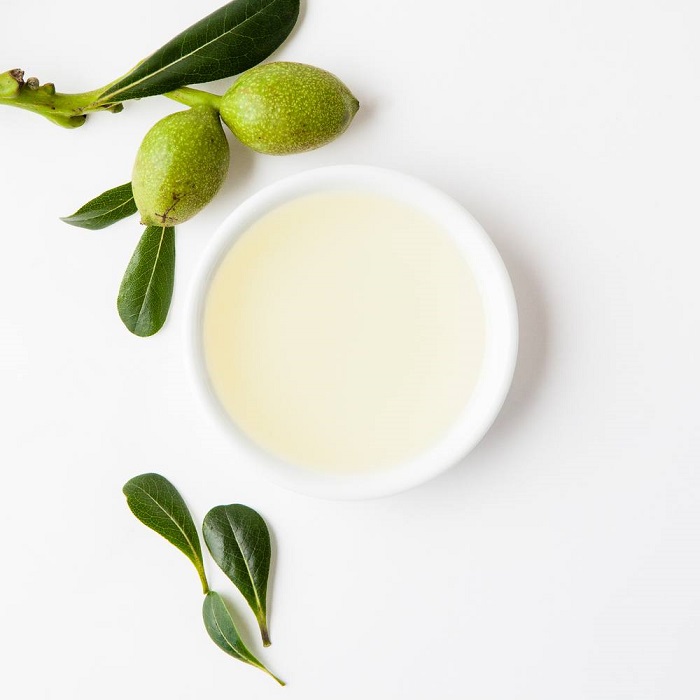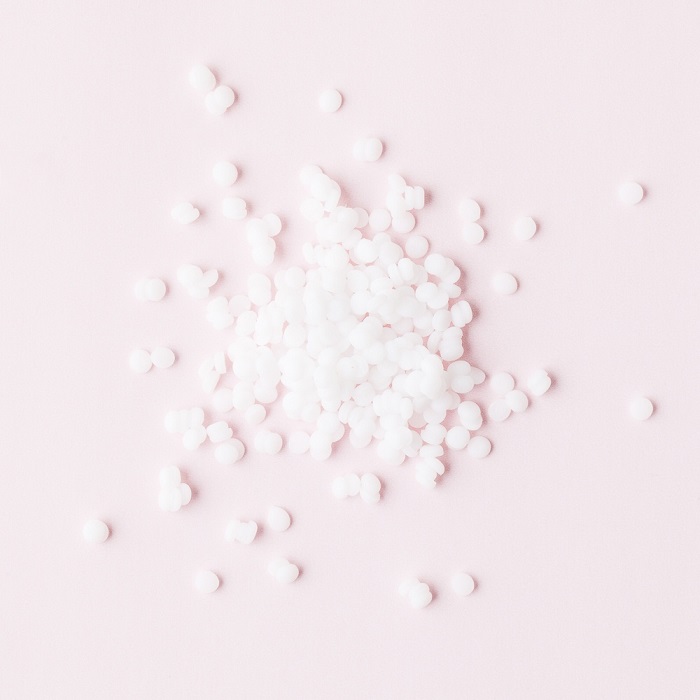When you consider the fact that custom hair care products can cost $40 or more, making your own DIY hair care products is a great idea. But it can be hard to know where to get started. There are so many ingredients out there, and what is shampoo made from, anyway? We have some of the answers you need to help you get started.
Know your hair type
Before you even start researching homemade hair care products, you need to know what you want to make, and that depends on your hair type. A coarse or dry hair type can benefit from hair oil, while fine hair or oily hair probably won’t.
Hair types are based on a few factors: hair texture, dryness or oiliness, and the thickness of the strand itself. So here’s what you need to know.
Do you have fine hair? Typically, folks with fine hair may not even be able to feel a single strand of their hair held between thumb and forefinger. If you can feel the hair, you may have normal or coarse hair.
Do you have dry hair? If you have problems with damage, breakage, tangling, or you have hair that feels rough or sticky, you might have dry hair. This hair needs extra conditioning and moisturizing. If you have hair that you need to wash frequently to prevent it from looking greasy, you might have oily hair.
What is your hair texture? There are 4 basic categories of hair texture; straight, wavy, curly, and kinky hair. These categories are further subdivided into three types depending on the degree of curl. So there’s a total of 12 hair textures that your hair may fall into. Even from there, everyone’s hair is different and these categories are general.

Do some research
Every time you take on a new hobby, do some research first. When making hair care products, you will find yourself working with emulsifiers, surfactants, conditioning ingredients, and more. You need to know what each one does to make sure that your homemade hair care products will be perfect for your hair. We have a ton of great hair care ingredients for you to get acquainted with.
Not only do you want to research ingredients, but you’ll want to find a good formula to tell you how to put those ingredients together. The ratios matter, and not all ingredients in a category will substitute for one another. For example, not all surfactants will have the same effect on your product or on your hair, even though they’re all surfactants.
Find a formula from someone you trust, whether it’s on the internet or from a book or even from a friend. Good formulas will always be either in weights, percentages, or both. Avoid recipes that give amounts in volumes, like cups or teaspoons or fluid ounces.
Always weigh your ingredients
Similarly, you’ll want to make sure that you weigh all of your ingredients. Working in grams is always more accurate because a gram is a smaller unit than an ounce.
We really can’t stress enough how important this is. It can be tempting to use volumetric measures instead to make things faster or easier, but it’s vital to measure by weight. Otherwise, your project may not work out the way you want it to.

Follow instructions carefully
When you have chosen your formula for your project, make sure you follow the instructions carefully. Temperature matters. Some ingredients need to be at the same temperature to combine, like in emulsified products. Some ingredients may lose their efficacy when heated to too high a temperature.
Typically this kind of project has the ingredients separated out into phases. For conditioner, you may have a water phase, a lipid phase, and a cool down phase. The cool down phase is added after your product has cooled below a certain temperature to protect the ingredients that you’re adding.
You may think you see a shortcut in the recipe, but the formulator wrote the formula that way for a reason. Stick to it, at least until you’ve learned enough to start creating your own recipes.
If you'd like some great recipes to start with, check out our hair care projects.
Choose easier projects first
Each hair care project has its own difficulty level. Hair oils and masks aren’t too difficult. Hair oil usually involves just combining the right proportions of oils together. Hair masks can be more complicated, as they’re sometimes emulsified.
Conditioner can be a little more complicated, because you’re including oils, conditioning agents, and other ingredients together to make a product that increases manageability, rinses out well, and can be used daily.
Shampoo usually uses a combination of surfactants plus conditioning agents, thickeners, and other ingredients. They’re not difficult to put together, but they can be challenging to formulate. It is typically easiest to start with a solid shampoo bar recipe, and then move on to liquid shampoos, should you want to do so.
Styling products can be easy or complicated. A simple salt spray for enhancing waves is pretty simple, while a homemade gel or hairspray might be more difficult.
For an extra easy start, check out our hair care kits. They come with detailed instructions and all the ingredients you need.

Don’t be afraid to fail
Finally, and maybe most importantly, don’t be afraid to fail. When you’re learning something new, it’s normal to make mistakes and have things not turn out the way you expected. Take your failures in stride and learn from them, It’ll make you a better hair care product creator in the end.
Making your own homemade hair care products doesn’t have to be intimidating. Start with the basics and move on from there, like you would with any new skill.
To get you started right, we have this Aloe Shampoo Bar Project, and this Carrot Hair Conditioner Project. We also have an organic shampoo base and an organic conditioner base that are a great place to start. All you need to do is just add the ingredients and fragrances that are best for you and your hair, and hop in the shower.

